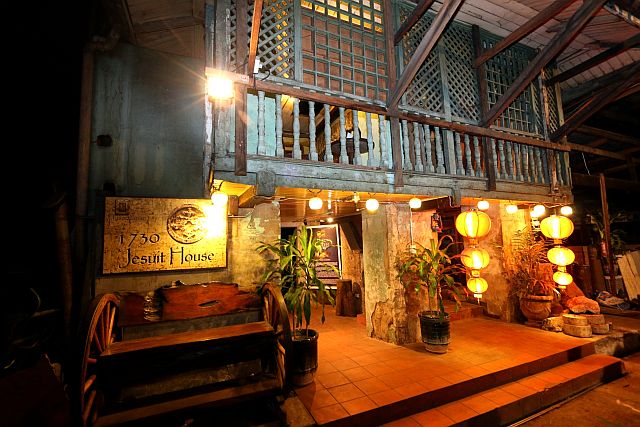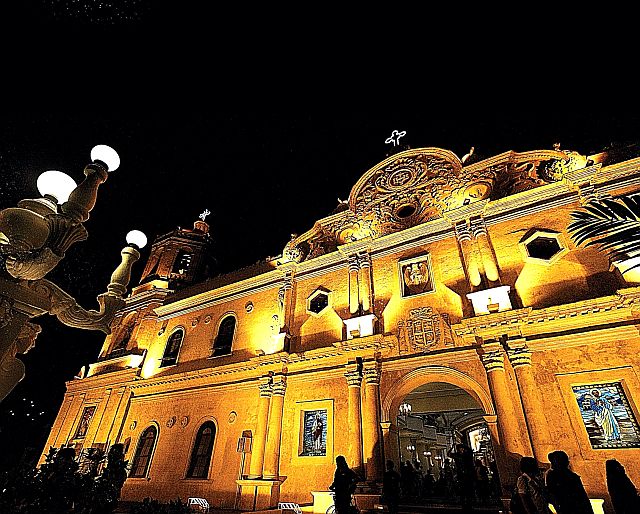
Yap-Sandiego ANCESTRAL HOUSE
Few cities in the Philippines can claim to a history that dates back to the arrival of Fernando de Magallanes, that intrepid Portuguese sailor who offered his services to the King of Spain to look for the Spice Islands. Fewer still are those who can claim to be an integral part of the history of a group of related islands that inadvertently made it into a nation.
The older part of Cebu City is the area near the sea as Cebuanos or island dwellers are wont to live near the sea or bodies of water like lakes and rivers.
The area from Fort San Pedro down to the Parian district used to be near the sea. Constant reclamation projects have pushed the sea farther. What is now the City Hall was the shoreline where boats from China and India carrying goods for barter docked.
So a walk through the historical part of the city should start in Fort San Pedro or Fuerza de San Pedro. The fort is triangular in shape with two sides originally facing the sea. The three bastions at the corners are named La Concepcion, Ignacio de Loyola and San Miguel. At the main gate, the date 1738 can be seen. This pertains to the date of completion of the stone fort and not the date of the original one built during the time of Miguel López de Legazpi which was probably made of wood.
From Fort San Pedro, the next stop should be the Kiosk of Magellan’s Cross in Plaza Sugbo. The Plaza used to be called Plaza Rizal, in honor of our national hero.
The kiosk was constructed during the time of Bishop Santos Gómez Marañon in 1834.
A gate at the west side of the kiosk leads to the patio of the Basilica Minore del Sto. Niño. This church is built supposedly on the site of the house where the men of Legazpi found the Sto. Niño. The church is still under the management of the Agustinian order, the very same
order of friars who came with Legazpi led by Fray Urdaneta.
From the Basilica, it is a short walk through its northern gate then on to a small street right across Osmeña Boulevard towards the Cebu Metropolitan Cathedral.
This imposing church is the seat of the Archdiocese of Cebu. The Cathedral went through so many reconstructions in the last four hundred years, from a very light wooden edifice to what it is now. The structure is made of coral stones and Philippine hardwood.
This was bombed by the Allied forces during the last World War and only the façade, bell tower and the stone walls remained.
To the right of the Cathedral is the Cathedral Museum of Cebu, thus named to show its former use as the rectory of the Cathedral. This coral stone and Philippine hardwood structure now houses ecclesiastical objects collected from the parishes of the Archdiocese.
A few meters from the Cathedral Museum is the compact Rizal Memorabilia housed within the old University of Southern Philippines campus along

MUSEO PARIAN -1730 JESUIT HOUSE
Mabini Street. From here, it is advisable to walk down Mabini Street to reach the other heritage places in Parian.
On Zulueta Street, we enter the gate of Ho Tong hardware store to visit the Jesuit House, so named because this was the residence of the Society of Jesus priests who administered the San Juan Bautista Church, better known as the Parian Church.
This structure is still built along the original principle of the “bahay kubo” albeit with the use of stones in the ground floor and Philippine hardwood in the upper floor.
From the Jesuit House, the logical destination is the Cebu Heritage Monument just at the mouth of Zulueta Street.
This monument is the work of Eduardo Castrillo, Filipino National Artist for Sculpture. It portrays the history of Cebu from the time of Lapu-Lapu to the present. Historical figures, landmarks as well as famous festivals of Cebu can be seen in this humongous monument in the heart of the Parian district.
A short distance to the northern side of the monument is the Yap-Sandiego House. It is a well-preserved residence which now is a sort of lifestyle museum. This structure is in the corner of Lopez Jaena Street where the Casa Gorordo can also be found.

Cebu METROPOLITAN CATHEDRAL
The Casa Gorordo is another lifestyle museum. This used to be the residence of the first Filipino/Cebuano bishop of Cebu, Juan Gorordo and his parents.
Most of the furniture inside belong to the turn-of-the-century period. This is the last heritage site to be visited in the Parian district.
Note that all the museums in this area are housed in heritage structures mostly built in the 17th, 18th and 19th centuries. The buildings themselves are worthy of being visited for their own historical value, and not just the artifacts housed inside their venerable walls.
* The Heritage Walk in Parian is one of the activities in the 10th run of Gabii Sa Kabilin on Friday, May 27.

